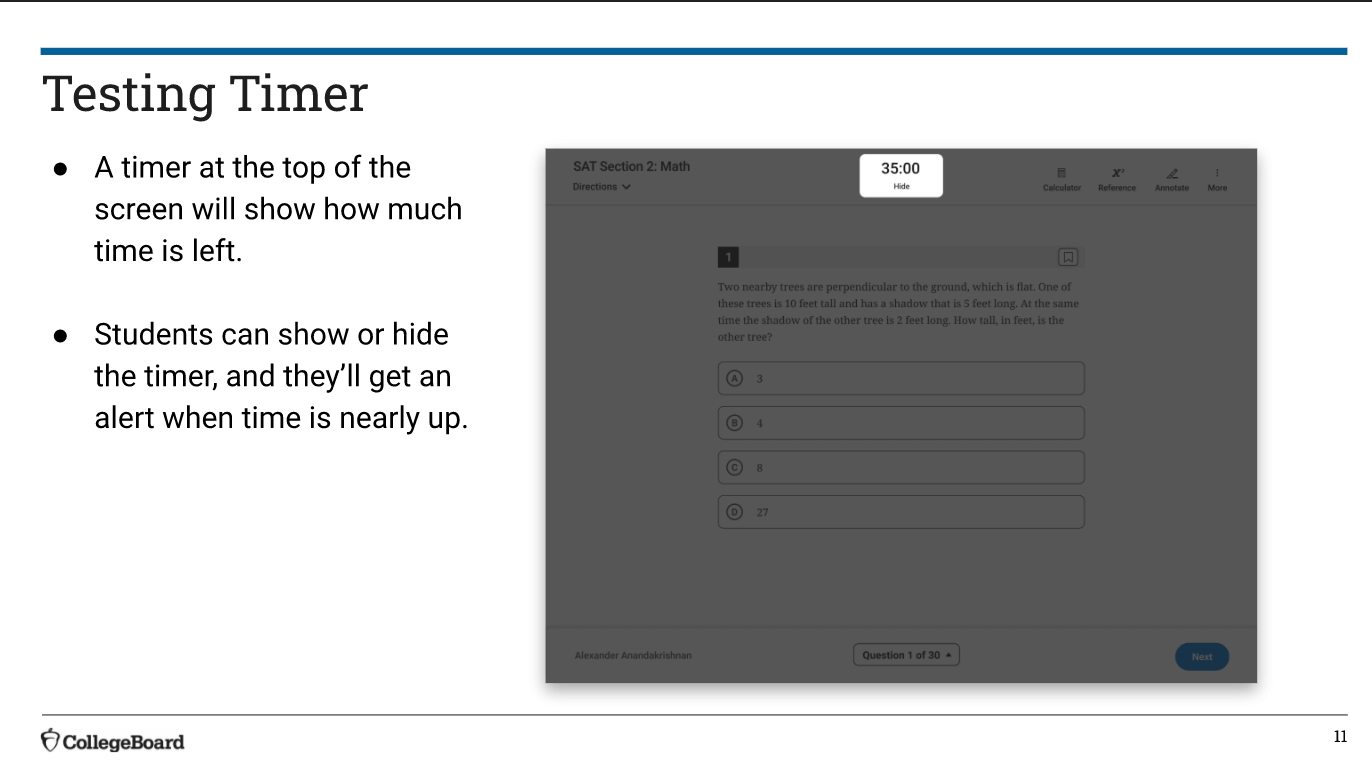What is the Digital SAT like?
After only 6 years in play, the test hated by most, loved by some, is being redesigned again!
So that begs the question—what changes can students expect to see?
OVERVIEW
- What’s Changing
- What’s Staying the Same
- When Will the Changes takes place
What’s changing
1. Computer Adaptive Test
By far the biggest change is that the new SAT will be administered by computer and will be adaptive. Adaptive means that if students do well on a math section, the next math section they take will be more difficult. If they do poorly on a math section, the next math section they take will be easier.

Students will take tests at schools with laptops, not pencil and paper. It seems that students can bring their own laptop or use one provided by the school.
2. The Age of the Calculator
On the current SAT there’s a no-calculator section, which includes 20 questions that must be answered without a calculator. That is going away with this newest iteration of the test.
Just like the ACT, students can now use a calculator to answer every single math question on the test.
Students can bring their own graphing calculator, or they can use a built in calculator which is powered by the Desmos graphing calculator found at desmos.com.

3. Built-in Timer
For the current SAT and ACT, we recommend that students use pacing watches to track their progress throughout each section. Relying on a clock in the room is a bad idea because you don’t know whether the clock will be broken, behind you, or non-existent. Relying on the proctor to keep proper time is also a bad idea, since we’ve had proctors who aren’t paying attention call time for a section before it was supposed to be.
The addition of a timer to the testing screen is a huge benefit to students who wouldn’t have otherwise used pacing watches. It’s unclear whether the SAT will continue to allow students to bring their own pacing watches to testing centers.

4. Two hours long, not three
This is probably one of the most significant changes to the test. Normally, the test takes over 3 hours to complete. Cutting down that time to two hours makes the stamina and mental preparation smaller of obstacles to overcome.
WHAT’S STAYING THE SAME?
1. Same Content will be Tested
It looks like many of the same concepts (linear, quadratic, exponential functions on the Math; grammar conventions on the Writing and Language section; etc) will continue to be tested on the digital SAT.
2. No more QAS (Question Answer Service)
As a test-prep professional, I was heart-broken to hear the news that we’ll no longer be able to access released past SAT tests. I kid you not—the last time I was this devastated was when Dumbledore died.
Being able to study trends in question types on new tests helped us give our students great advantages, and I don’t know if I’ll ever recover from the crushing sadness of the loss.
However, not all is lost. Since the digital version of the test will test the same concepts being tested now, all of the tests that we do have at our disposal will provide our students with valuable practice.
3. Reading and Writing Combined to One Section, with One Passage per Question
This is a pretty big departure from the current iteration of the test which has separate Reading and Writing sections with each passage having about 10 questions.
4. No At-Home Test
Students will still have to go to a high school or other testing center to do the test. So, if you were hoping on an at-home test (you know who you are…) I’m sorry to disappoint you!
5. Scoring Stays the Same
The College Board is not releasing a new concordance table from the old SAT to the new SAT, which means scoring is virtually the same.
Also, The iconic maximum score of 1600 is sticking around for good. There won’t be any reversion to the older max score of 2400 or a change to a fun, new maximum score like 4800 or 6400.
6. Multiple choice and Student-produced responses on the Math sections
On the Math sections, students will continue to see both multiple choice questions and student produced response questions.
Source: https://satsuite.collegeboard.org/digital/resources
Source: CollegeBoard Meeting with Test Prep Professionals via Amy Seeley of Seeley Test Pros (https://seeleytestpros.com/), Jan 26th 2022.




